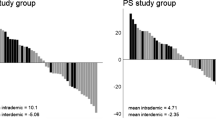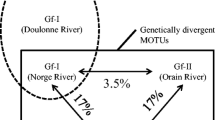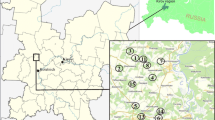Abstract
We present results on cross-mating experiments using Brachionus plicatilis strains collected in three ponds of a coastal marsh (Torreblanca Marsh, Castellón, Spain). These strains were known to differ widely both in morphology and allozyme patterns from a previous study, where they were grouped into three genetically different clonal groups. Although some of the strains co-occurred in the same pond and sexual periods overlapped, no gene flow was found among them. Our first objective was to determine whether behavioral reproductive isolation was responsible for the absence of interbreeding. A second objective was to explore the relationship between sexual isolation and genetic divergence. We performed two experiments. In Experiment 1, we tested five strains from different clonal groups; in Experiment 2, we added a strain from a congeneric species, and strains from different ponds. We recorded male mating behavior in all possible male-female strain pairings. Our data show that males of a strain tend to mate with females of the same strain or genetically similar strains, regardless of the pond they come from. We also found a high positive correlation between isolation distance and genetic distance. These results support the view that mating behavior acts as an important isolating barrier giving cohesion to clonal groups, and structuring populations of this rotifer, and that Brachionus plicatilis is a taxon composed of more than one biological species.
Similar content being viewed by others
References
Butlin, R., 1989. Reinforcement of premating isolation. In D. Otte & J. A. Endler (eds), Speciation and its consequences. Sinauer Associates, Inc. Sunderland, MASS: 158–179.
Carmona, M. J., M. Serra & M. R. Miracle, 1989. Total protein analysis in rotifer populations. Biochem. Syst. Ecol. 17: 409–415.
Endler, J. A., 1989. Conceptual and other problems in speciation. In D. Otte & J. A. Endler (eds), Speciation and its consequences. Sinauer Associates, Inc. Sunderland, MASS: 625–648.
Fu, Y., K. Hirayama & Y. Natsukari, 1991a. Morphological differences between two types of the rotifer Brachionus plicatilis O. F. Müller. J. exp. mar. Biol. Ecol. 151: 29–41.
Fu, Y., K. Hirayama & Y. Natsukari, 1991b. Genetic divergence between S and L type strains of the rotifer Brachionus plicatilis O. F. Müller. J. exp. mar. Biol. Ecol. 151: 43–56.
Fu, Y. K., A. Hagiwara & K. Hirayama, 1993. Crossing between seven strains of the rotifer Brachionus plicatilis. Nippon Suisan Gakkaishi 59: 2009–2016.
Gilbert, J. J., 1963. Contact chemoreceptors, mating behavior and sexual isolation in the rotifer genus Brachionus. J. exp. Biol. 40: 625–641.
Guillard, R. R. L. & J. H. Ryther, 1962. Studies of marine planktonic diatoms. I. Cyclotella nana Hustedt, and Detonula confervacea (Cleve). Can. J. Microbiol. 8: 229–239.
Gómez, A., M. Temprano & M. Serra, in press. Ecological genetics of a cyclical parthenogen in temporary habitats. J. evol. Biol.
Majerus, M., P. O'Donald & J. Weir, 1982. Evidence for preferential mating in Adalia bipunctata. Heredity 49: 37–49.
Mayr, E., 1970. Populations, Species and Evolution. Harvard University Press, Cambridge.
Paterson, H. E. H., 1985. The recognition concepts of species. In E. S. Vrba (ed.), Species and Speciation. Transvaal Museum Monograph No. 4, Pretoria: 21–29.
Rico-Martínez, R. & T. W. Snell, 1995. Mating behavior and mate recognition pheromone blocking of male receptors in Brachionus plicatilis Müller (Rotifera). Hydrobiologia 313/314 (Dev. Hydrobiol. 109): 105–110.
Ringo, J. M., H. B. Dowse & S. Lagasse, 1986. Symmetry vs. asymmetry in sexual isolation experiments. Evolution 40: 1071–1083.
Rumengan, I. F. M., H. Kayano & K. Hirayama, 1991. Karyotypes of S and L type rotifers Brachionus plicatilis O. F. Müller. J. exp. mar. Biol. Ecol. 154: 171–176.
Snell, T. W., 1989. Systematics, reproductive isolation and species boundaries in monogonont rotifers. Hydrobiologia 186/187 (Dev. Hydrobiol. 52): 381–386.
Snell, T. W. & B. L. Garman, 1986. Encounter probabilities between male and female rotifers. J. exp. mar. Biol. Ecol. 97: 221–230.
Snell, T. W. & C. A. Hawkinson, 1983. Behavioral reproductive isolation among populations of the rotifer Brachionus plicatilis. Evolution 37: 1294–1305.
Snell, T. W. & F. J. Hoff, 1987. Fertilization and male fertility in the rotifer Brachionus plicatilis. Hydrobiologia 147 (Dev. Hydrobiol. 42): 329–334.
Snell, T. W. & P. D. Moms, 1993. Sexual communication in copepods and rotifers. Hydrobiologia 255/256 (Dev. Hydrobiol. 83): 109–116.
Sokal, R. R. & F. J. Rohlf, 1981. Biometry. Freeman, San Francisco, California.
Spieth, H. T. & J. M. Ringo, 1983. Mating behavior and sexual isolation in Drosophila. In M. Ashburner, H. L. Carson & J. N. Thompson. The genetics and biology of Drosophila. vol. 3c. Academic Press, London: 243–284.
Sudzuki, M., 1987. Intraspecific variability of Brachionus plicatilis. Hydrobiologia 147 (Dev. Hydrobiol. 42): 45–47.
Swofford, D. L. & R. B. Selander, 1989. BIOSYS-1. A computer program for the analysis of allelic variation in population genetics and biochemical systematics. Illinois Natural History Survey.
Templeton, A. R., 1989. The meaning of species and speciation: a genetic perspective. In D. Otte & J. A. Endler (eds), Speciation and its consequences. Sinauer Associates, Inc. Sunderland, MASS: 3–27.
Van Valen, L., 1976. Ecological species, multispecies and oaks. TAxon 25: 233–239.
Wright, S., 1978. Evolution and the genetics of populations, vol. 4. Variability within and among populations. University of Chicago Press, Chicago.
Author information
Authors and Affiliations
Rights and permissions
About this article
Cite this article
Gómez, Á., Serra, M. Behavioral reproductive isolation among sympatric strains of Brachionus plicatilis Müller 1786: insights into the status of this taxonomic species. Hydrobiologia 313, 111–119 (1995). https://doi.org/10.1007/BF00025938
Issue Date:
DOI: https://doi.org/10.1007/BF00025938




